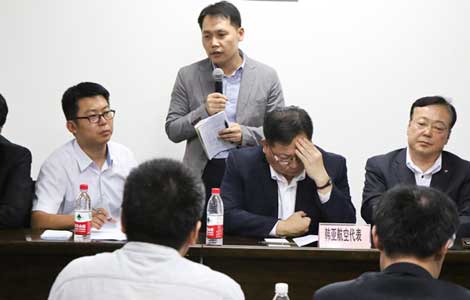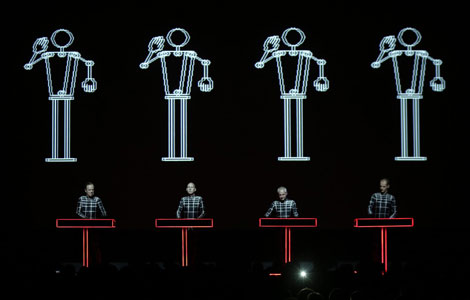
|
From top: A furniture craftsman with the Palace Museum works on a red sandalwood chair; Many ancient Chinese paintings collected in the Palace Museum need elaborate restoration by masters; A work station for staff to fix old paintings. Photos by Zhang Fan / Xinhua |

Beijing's Palace Museum holds many imperial relics that have long been stored away from the public eye. But that could soon change with major restoration plans afoot
In the heart of Beijing, the Forbidden City sits majestically despite hoards of tourists who spill through its gates each day for a taste of China's imperial past. Those visitors experience the grandeur of its architecture as they stroll down its corridors and across its broad open squares, but what they don't see is a host of imperial treasures that have long been gathering dust, hidden away from most peoples' eyes.
That could soon change, though, as those treasures are to be restored under a repair and rescue project signed by the Palace Museum and the Beijing Dongcheng district government in January. The new initiative is part of "The Safe Palace Museum" project.
"The Palace Museum is our lifeline so protecting it is our responsibility," says Dongcheng district director Niu Qingshan.
The cultural relics waiting to be repaired all belong to the Palace Museum collection, which fall into seven major categories: wooden furniture, royal lamps and lanterns, carts and palanquins, musical instruments, sabers and swords, opera costumes, and Chinese silk tapestry.
Expert craftsmen, all heritage inheritors from traditional workshops such as the Beijing Opera Costume Factory and the Beijing Enamel Factory located in Dongcheng district, will be invited to restore the objects in the Palace Museum. It will be the first time something like this has been done on such a large scale at the Forbidden City.
"Dongcheng district is home to numerous crafts inheritors, many of whose teachers worked in the Qing Dynasty (1644-1911) Court's manufacture office," says Palace Museum director Shan Jixiang. "They are very familiar with the objects they're going to repair."
The Palace Museum has a large collection from the seven categories, Shan says.
The numbers are staggering, with 9,640 pieces of opera costumes, 1,448 lamps and lanterns, and some 300 carts and palanquins. Many have succumbed to the ravages of time and wear and tear. The repair project was supposed to take place several months later in the museum's 476,000-square-meter new branch at the north complex currently under construction, but museum director says it cannot wait.
Several rooms within the Hall of Consolation of Mothers (Ci Ning Gong) are now being used as temporary studios, and the work will move into the north complex at the end of this year when it is completed. Visitors will then be able to view the progress of the repairs.
"We cannot afford any delay since many of the masters are advanced in years," says Sun Ying, a state-level inheritor of opera costume making.
In 2003, Sun and the Beijing Opera Costume Factory reproduced more than 200 pieces of ritual equipment once used for royal weddings in the Palace of Earthly Tranquility (Kun Ning Gong).
According to Sun, restoration is much more difficult than reproduction. Restoring the Palace of Longevity and Health (Shou Kang Gong) to its former glory will require many lanterns and pieces of two-sided embroidery. More than 40 trainees are now working on them with the master craftsmen.
For craftsmanship that is already extinct in Beijing, museum experts are searching far and wide for the best heritage craftsmen from the country.
Wang Jianjiang is a sixth-generation craftsman specializing in the art of K'o-ssu silk tapestry. He was invited to Beijing for the project.
The 50-year-old says these tapestries were very precious in the past, so they are only used on the emperor's dragon robes.
"K'o-ssu is more difficult than embroidery. It is woven layer by layer to create a sculptured texture," says Wang, who was prepared for his task with a one-week training session on safety.
"Fabrics are very fragile. It can take up to three years to repair just one piece," says Miao Jianmin, the Palace Museum's director in the Cultural Heritage Conservation Department.
Museum Director Shan says that the whole restoration project will be well documented, so later generations can learn about the materials and techniques.
zhangzixuan@chinadaily.com.cn
(China Daily Africa Weekly 07/19/2013 page26)








